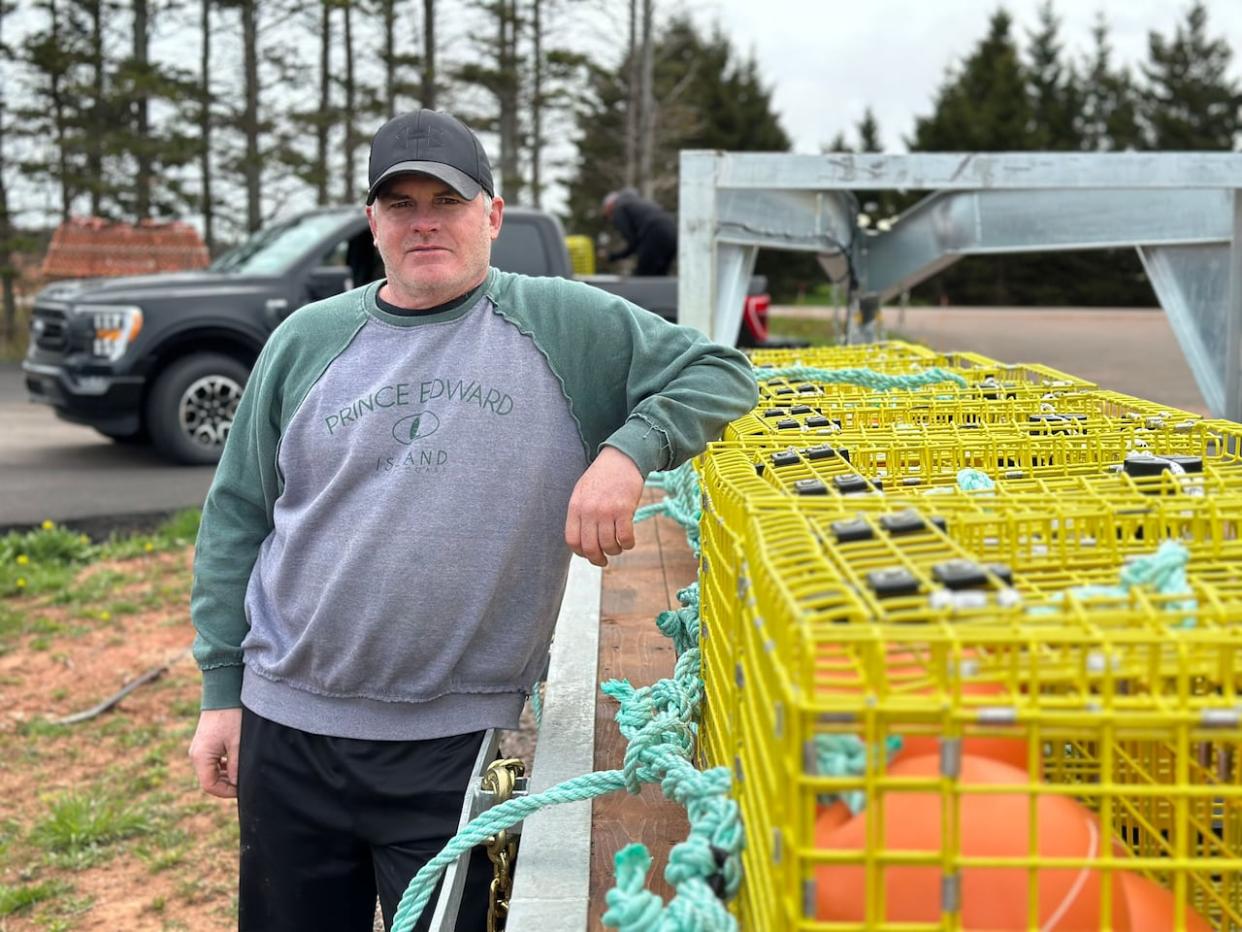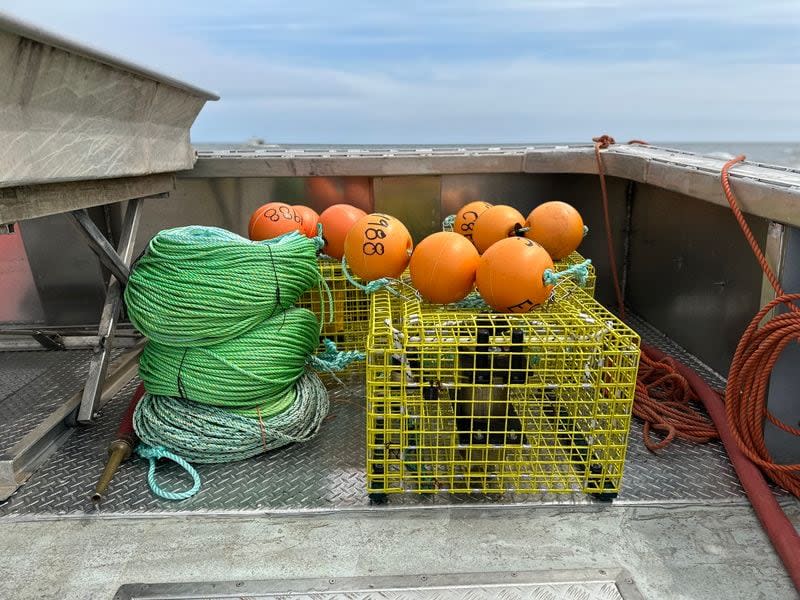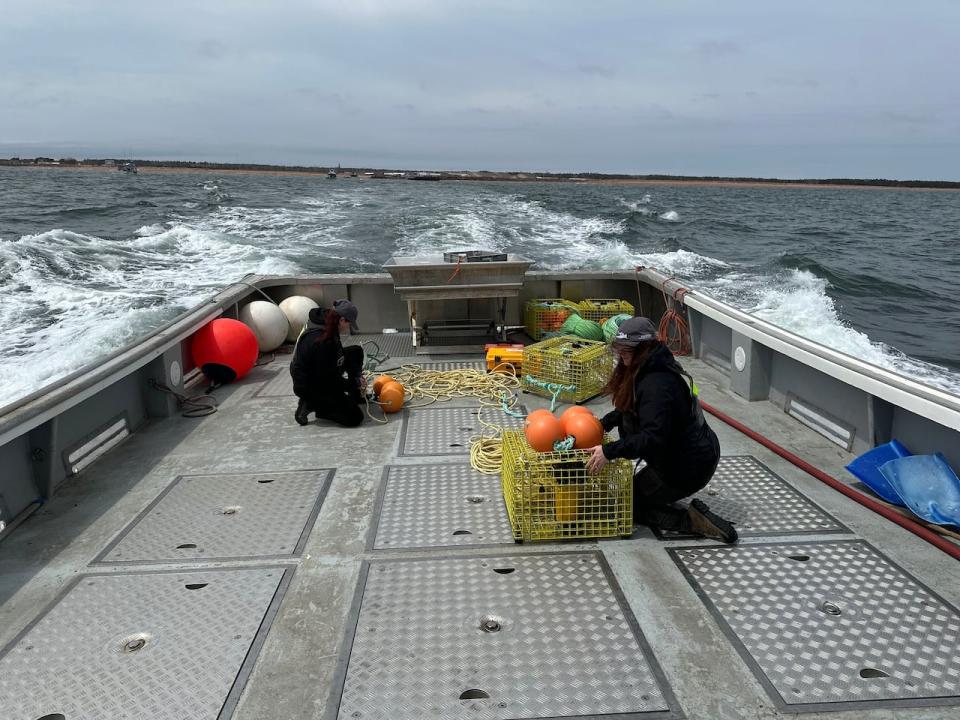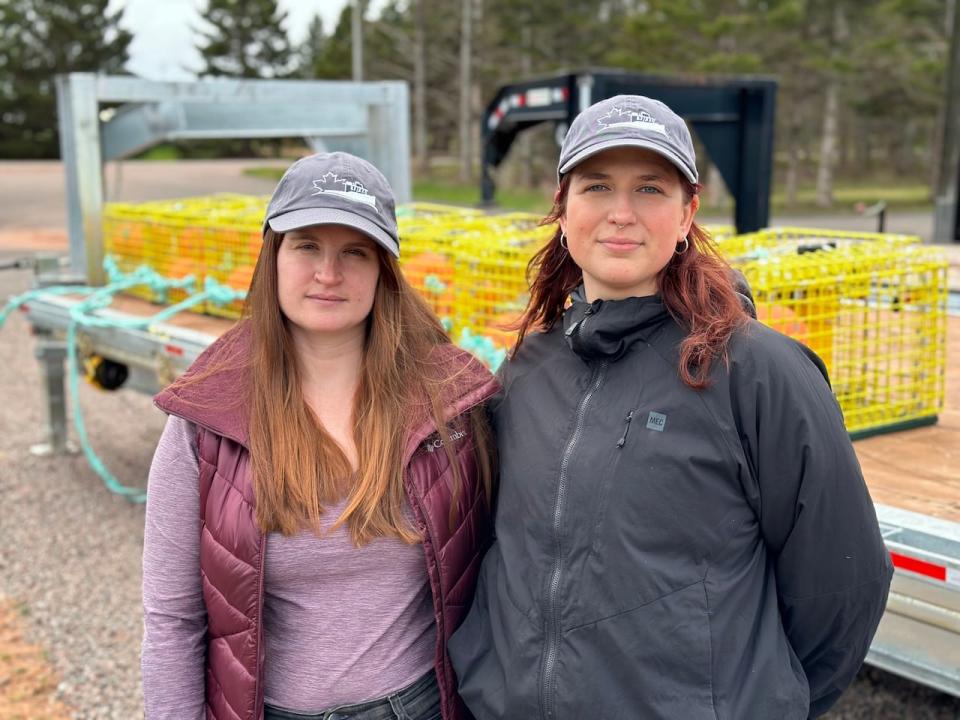Ropeless gear program will keep P.E.I. snow crab harvester on water despite whale sightings

A P.E.I. snow crab fisherman will be able to finish up his season, despite being on the edge of a zone closed after the sighting of an endangered North Atlantic right whale, thanks to a ropeless gear lending program.
Alden Gaudet fishes snow crab out of Tignish Run and is close to reaching his quota for the season.
The first sighting of a right whale in Canadian waters in 2024 came last Friday. A whale that has been dubbed Shelagh was seen northeast of New Brunswick and northwest of the Magdalen Islands.
After that led to a partial closure of fishing grounds near his traps, Gaudet reached out to CanFish, a free gear-lending program based in Halifax that's operated by the Canadian Wildlife Federation.
"At the moment the whales, the closed zone, are literally butting on our crab gear," Gaudet said this week. "We've moved away, and we have our gear a little congested, so we're going to spread our gear back out, and set some of our traps back in the closed zone."
Not the first time
Gaudet said he and other fishers in the area are keeping a close eye on the maps that track right whale sightings, to see where they are being observed.

Snow crab fisherman Alden Gaudet says this isn't the first time he's had to change his plans because of whale sightings, but it is the first time he's been able to swap out his gear instead of moving out of the area entirely. (Aaron Adetuyi/CBC)
He had a similar experience a couple of years ago when whales moved into his snow crab fishing area.
"Last time, we didn't have this option, and we had to move our gear several times — like 30, 40, 50 miles — where today we have the option to do a swap out," Gaudet said.
"So we're gonna swap out [the gear] and move back into the zone immediately."
With about three or four trips out to the traps left in the season, "we could get by without this stuff," he said, "but it's going to make it easier for us for the next few trips.
We like to see the whales swimming. We don't want to see them die. We just want to all coexist and be able to make a living doing it. — Alden Gaudet
"It's better to be prepared than to be caught with your pants down."
Gaudet said he's also looking forward to trying out new technology from the gear lending program because he wants to do what he can to protect the endangered right whales.
"We're doing it to keep ourselves fresh with the knowledge of everything and test out the new technology," he said.
"We like to see the whales swimming," he added. "We don't want to see them die. We just want to all coexist and be able to make a living doing it."

This ropeless gear eliminates the vertical buoy line in the water column, and is one of two types of traps that CanFish loans out. (Aaron Adetuyi/CBC)
Gear loaned to 14 harvesters
Fishing gear technologists Hanna Vatcher and Sahra Skripsky travelled to Tignish to give Gaudet 10 ropeless on-demand systems, and to give him a refresher on how they work.
"It's a critically endangered species. Whenever one is seen, an area of about 2,000 square kilometres gets closed down where no fishing can take place," Vatcher said.
"That impacts a lot of fishers' livelihoods — and especially snow crab and lobster harvesters."
The ropeless gear eliminates the vertical buoy line in the water column, allowing harvesters to keep fishing and not lose their livelihood when a closure is announced.
The technologists said there are two kinds of systems that they loan to fishers, based on either rope containment or an on-demand lift-bag mechanism.

Hanna Vatcher and Sahra Skripsky from CanFish travelled to Tignish to give Alden Gauden 10 ropeless traps, and show him how they work. (Aaron Adetuyi/CBC)
"They will set the trawl as normal and then whenever they want to recall it and haul their gear, they use acoustics to send a signal down to the on-demand [trigger] at the bottom," Skripsky said of the rope containment system.
The lift-bag system uses an oxygen tank that can be triggered to inflate a bag that will carry a rope to the surface to let the harvesters haul up the trap.
The lending program started in 2022, but the CWF has been doing trials with ropeless gear since 2019.
It's a huge impact to their livelihood. It's a hard and stressful time for them. So we want to help them as much as we can and we also want to help the whales. — Hanna Vatcher
So far, the program has loaned gear to 14 harvesters in various parts of Nova Scotia and P.E.I.
"It's a learning curve for sure," Vatcher said of the closures.
"A lot of these harvesters, it's a huge impact to their livelihood. It's a hard and stressful time for them. So we want to help them as much as we can and we also want to help the whales."
"That's also why we do so many trials, because we want to ensure that the gear we give to these harvesters is going to work, and they're going to get their haul and their catch back," Skripsky said.
"So we want to be very confident. Also, they're taking a lot of trust in us, so we want to make sure that we trust what we give them to fish."

